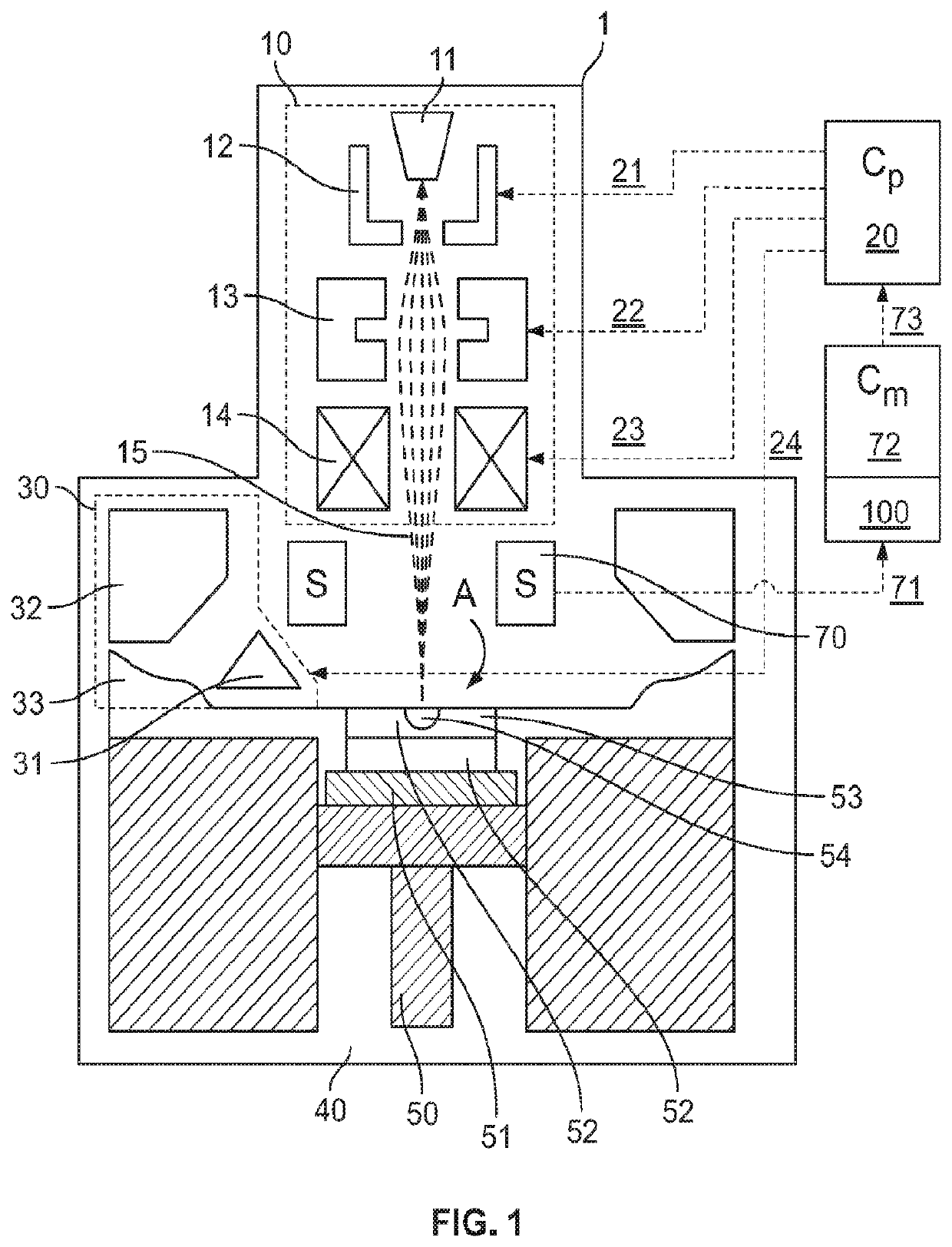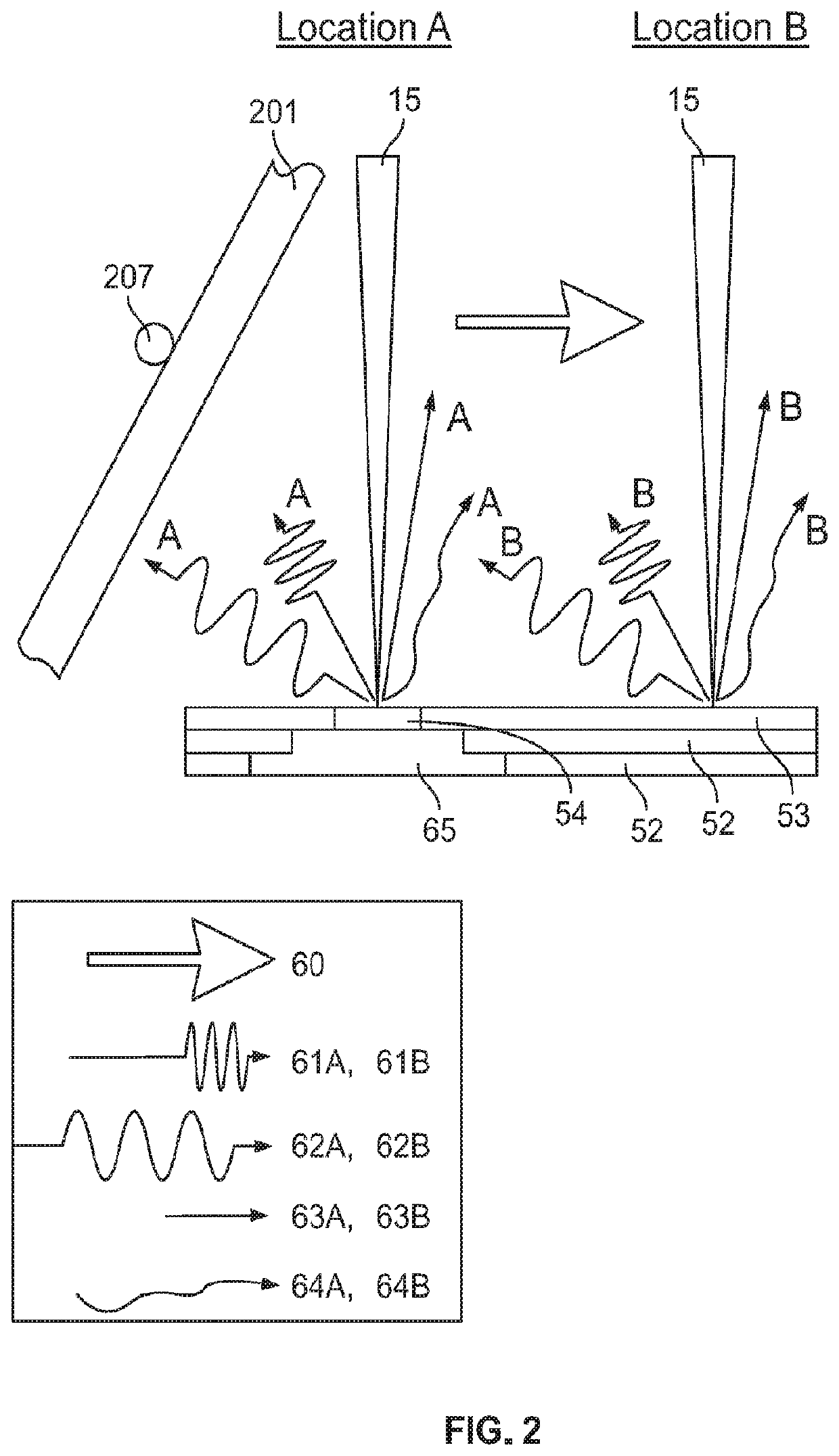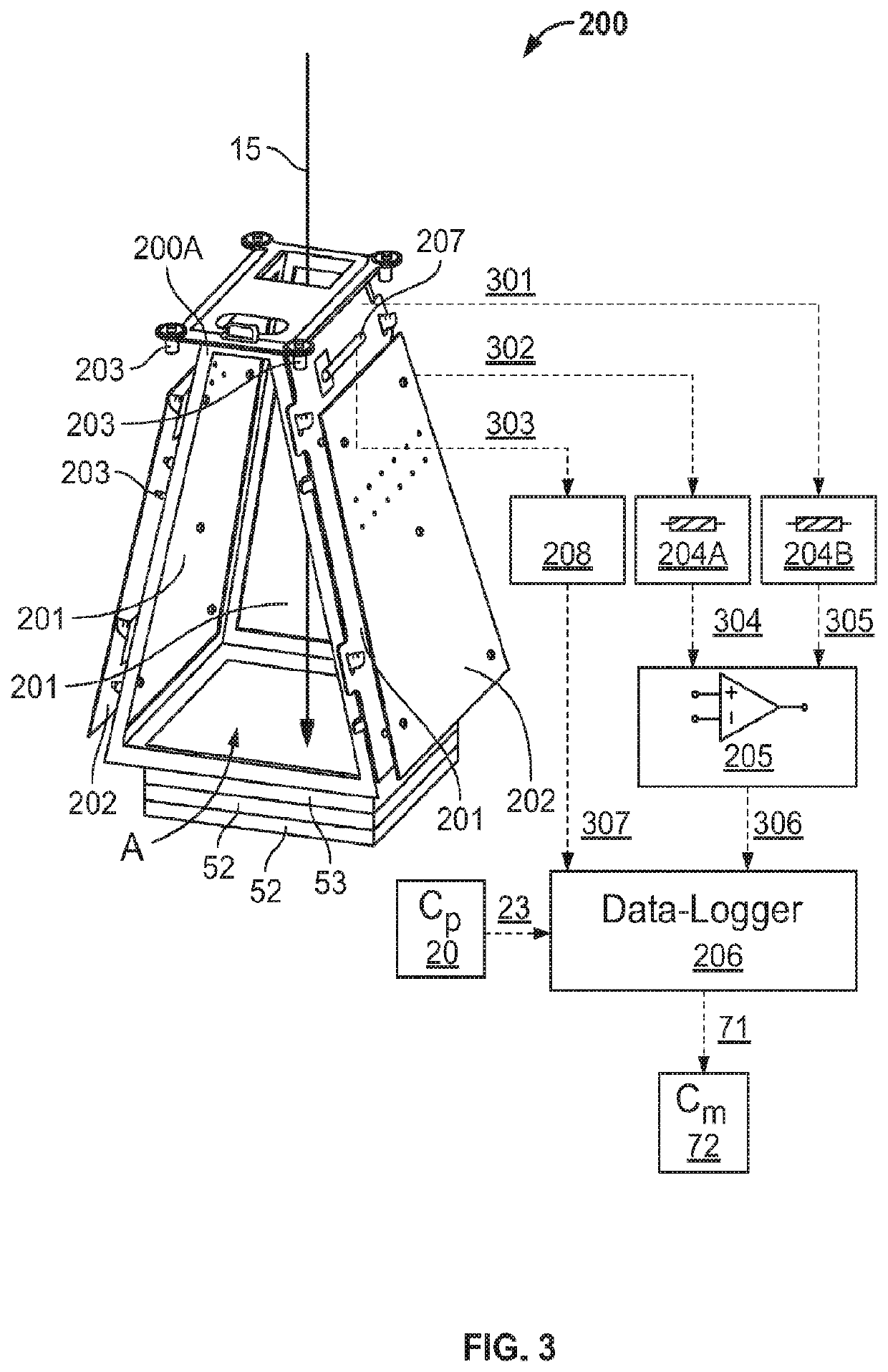Device For In-Situ Fabrication Process Monitoring And Feedback Control Of An Electron Beam Additive Manufacturing Process
a technology of in-situ fabrication process and feedback control, applied in the field of additive manufacturing, can solve the problems of affecting mechanical properties and the geometry of am-manufactured parts, lack of process repeatability and part quality reproducibility, and non-uniform sublimation or evaporation
- Summary
- Abstract
- Description
- Claims
- Application Information
AI Technical Summary
Benefits of technology
Problems solved by technology
Method used
Image
Examples
application examples
Example 1: Use of Feedback Electron Signal for Observation and Study of the Electron Beam Additive Manufacturing Process
[0100]An in situ monitoring system, such as device 200 configured to operate EBAM process monitoring and feedback control process 400 on host machine 1, may be used to observe and study the interactions between the primary electron beam and processing area, melt zone, powder bed and the solidified melted surface for quality verification. A few experiments were carried out using such a system, in which the primary electron beam was sent to raster-scan across a 200 mm×200 mm×2 mm (Width (W)×Depth (D)×Height (H)) stainless steel plate with a 200 mm×50 mm×2 mm (W×D×H) aluminum plate placed on top. A feedback electron sensor in the monitoring system captured the feedback electrons from the processing area during the beam scan while a data logger sampled the obtained signal and relayed the data to a monitoring controller. FIG. 6 is a plot of typical feedback electron sig...
example 2
edback Thermal Radiation Signal for Observation and Study of the Electron Beam Additive Manufacturing Process
[0101]The in situ monitoring system may be used to observe and study the temperature of the processing area, melt zone, powder bed and the solidified melted surface for quality verification. During an experimental build, an EBAM host machine pre-heated its processing area before fabricating a predefined design in a layer upon layer fashion. A feedback thermal radiation sensor in the monitoring system captured the feedback thermal radiation irradiated from the processing area throughout the build while a data logger sampled the obtained signal and relayed the data to a monitoring controller. FIG. 7 is a plot of feedback thermal radiation signals received from a user-defined region of interest within the EBAM host machine as a function of time. The plot shows that the feedback thermal radiation captured by the sensor gives a pattern which reflects the host machine building step...
example 3
ectronic Imaging for Observation and Study of the Electron Beam Additive Manufacturing Process
[0102]The in situ monitoring system can be used to observe and study the EBAM process by carrying out electronic imaging. A feedback electron sensor, such as device 200, in the monitoring system captures the feedback electrons from the processing area during electronic imaging while a data logger samples the obtained signal and relays the data to a monitoring controller. The monitoring controller runs algorithms to generate digital electronic images from the data relayed from the data logger. The digital electronic images generated allow quality evaluation of the deposition of powder in the powder bed, anomaly detection in the processing area, and geometry deviation quantification of the solidified melted surface. Various sets of experiments were carried out to verify the electronic imaging capability of the monitoring system.
[0103]One of the experiments concerned monitoring area and spatia...
PUM
| Property | Measurement | Unit |
|---|---|---|
| Width | aaaaa | aaaaa |
| size | aaaaa | aaaaa |
| size | aaaaa | aaaaa |
Abstract
Description
Claims
Application Information
 Login to View More
Login to View More - R&D
- Intellectual Property
- Life Sciences
- Materials
- Tech Scout
- Unparalleled Data Quality
- Higher Quality Content
- 60% Fewer Hallucinations
Browse by: Latest US Patents, China's latest patents, Technical Efficacy Thesaurus, Application Domain, Technology Topic, Popular Technical Reports.
© 2025 PatSnap. All rights reserved.Legal|Privacy policy|Modern Slavery Act Transparency Statement|Sitemap|About US| Contact US: help@patsnap.com



